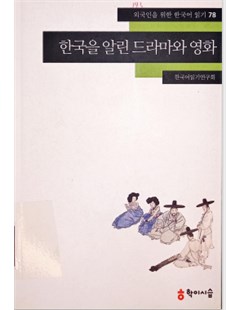语义学 = Semantics
语义学关注词语的意义以及词语是如何形成的。
2016
语义学关注词语的意义以及词语是如何形成的。
凯特·卡恩斯著的《语义学(第2版)(英文版)》 对“语义学”这一领域的基本概念、研究方法等做了 全面介绍,每一章后还附有练习帮助巩固知识。第二 版较**版增加了*多的语料,分析语言*浅显易懂 。既可作为语言学入门教材在高校课堂上使用,也可 供感兴趣的读者自学阅读,具有很强的可读性和实用 性。
目录
Acknowledgements
Preface to the First Edition
Preface to the Second Edition
1 Introduction
1.1 Semantics and pragmatics
1.2 Kinds of meaning
1.2.1 Denotation and Sense
1.2.2 Lexical and structural meaning
1.2.3 Categorematic and syncategorematic expressions
1.3 Truth-conditional theories of meaning
1.3.1 Denotations
1.3.2 Possible worlds, extension and intension
1.3.3 Truth conditions
1.3.4 Truth-based relations between statements
1.4 Implicature
1.4.1 The Principle of Relevance
1.4.2 The Principle of Informativeness
1.5 Other contextual factors: indexicality and anaphors
1.6 Presupposition
Exercises
Further Reading
2 Basic Logical Tools
2.1 Representations for meanings
2.2 The logical connectives
2.2.1 Conjunction
2.2.2 Negation
2.2.3 Disjunction
2.2.4 The material implication connective
2.2.5 The biconditional connective
2.3 Predicates and arguments
2.3.1 Predicates, verbs and the number of arguments
2.3.2 Sentences as arguments
2.3.3 Path arguments
Exercises
Further Reading
3 The Logical Quantifiers
3.1 The universal quantifier
3.2 The existential quantifier
3.3 Intersective and non-intersective adjectives
3.4 The logical quantifiers are interdefinable
3.5 Scope and scopal ambiguity
3.5.1 Scope and tree diagrams
3.5.2 Scopal ambiguity
Exercises
Further Reading
4 Formal Composition
4.1 Types
4.2 Functions
4.3 Types of function
4.4 Lambda abstraction
4.5 Some general rules for semantic composition
4.6 Predicate variables
Summary of rules and definitions
Exercises
Further Reading
5 Modality and Possible Worlds
5.1 Kinds of modality
5.1.1 Logical modality
5.1.2 Epistemic modality
5.1.3 Deontic modality
5.2 Modality and possible worlds
5.2.1 Logical modality and possible worlds
5.2.2 Epistemic modality and possible worlds
5.2.3 Deontic modality and possible worlds
5.2.4 Interdefinability with negation
5.3 Counterfactuals
Exercises
Further Reading
6 Generalized Quantifiers
6.1 Quantification beyond first order logic
6.2 Generalized Quantifier Theory
6.3 Different types of quantifier determiner
6.3.1 Group 1 and Group 2 determiners
6.3.2 The ambiguity of few and many
6.3.3 Few and a few
6.3.4 Some and several
6.4 Restricted quantifier notation
6.5 Scopal ambiguity
6.6 Proportional determiners and discourse familiarity
6.7 Strong and weak determiners and there BE sentences
6.7.1 The definiteness effect
6.7.2 Types of there BEsentence
6.8 Determiner the and definite descriptions
6.8.1 Russell's Theory of Descriptions
6.8.2 The as a generalized quantifier
6.8.3 Definite descriptions as strong NPs
Familiarity effects
Definite descriptions in there BE contexts
Definite descriptions and scopal ambiguity
6.9 Quantifiers and negative polarity items
6.10 Generalized quantifiers as lambda functions
Exercises
Further Reading
7 Referential Opacity
7.1 Quine's referential opacity
7.2 Modality, descriptions and names
7.2.1 Modality and names
7.2.2 Modality and descriptions
7.3 Propositional attitudes and descriptions
7.4 Summary: descriptions and scope
7.5 Propositional attitudes and names
7.6 De re and de dicto readings with other quantifiers
7.7 Indefinite descriptions and specificity
Exercises
Further Reading
8 Aktionsarten: Aspectual Classes of Events
8.1 Vendler's four aspectual classes
8.2 Diagnostic tests for aktionsarten
8.2.1 In adverbials
8.2.2 The take time construction
8.2.3 For adverbials
8.2.4 The sub-interval property
8.2.5 Entailments of the progressive
8.2.6 Duration and the progressive
8.3 Telicity and boundedness
8.4 Semelfactive predicates
8.5 Aktionsarten and agentivity
8.6 Nominal and verbal aspect
8.7 Closing comment
Exercises
Further Reading
9 Tense and Aspect
9.1 Introduction
9.2 The English verb group
9.3 Interpretations of present, past, progressive and perfect
9.3.1 Interpretations of the present tense
9.3.2 Interpretations of the past tense
9.3.3 Other forms for future and habitual
9.3.4 Interpretations of the progressive
9.3.5 Interpretations of the present perfect
Present time adverbials
Current result states
'Hot news' perfect
Continuing state
9.4 Tense as an operator
9.5 Tense and reference to times
9.6 Reichenbach's analysis of tense
9.7 Reference to times in a narrative
9.7.1 Reference time movement
9.7.2 State/progressive includes reference time:reference time includes bounded event
9.7.3 Is r the same as Reichenbach's R?
9.7.4 General principles for temporal interpretation in narrative
9.7.5 Adding tense
9.8 Closing comment
Exercises
Further Reading
10 Thematic Roles and Lexical Conceptual Structure
10.1 Introduction
10.2 Traditional thematic roles
10.2.1 Agent/Actor and Patient
10.2.2 Localist roles
10.2.3 Recipient and benefactive
10.2.4 Experiencer and stimulus
10.2.5 Do adjuncts have thematic roles?
10.2.6 Themes and Patients
10.2.7 Summary
10.3 More detailed analysis of thematic roles
10.4 Lexical concept
凯特•卡恩斯, 语义学 = Semantics, 上海外语教育出版社, 2016
 |  |  |
| 평생 써먹는 재봉틀의 기본 =Những điều cơ bản về một chiếc máy may sẽ tồn tại suốt đời | 한국을 알린 드라마와 영화 = Phim truyền hình và phim điện ảnh về Hàn Quốc |
Thứ Sáu, 16:16 31/03/2023
Copyright © 2018 Hanoi University of Industry.